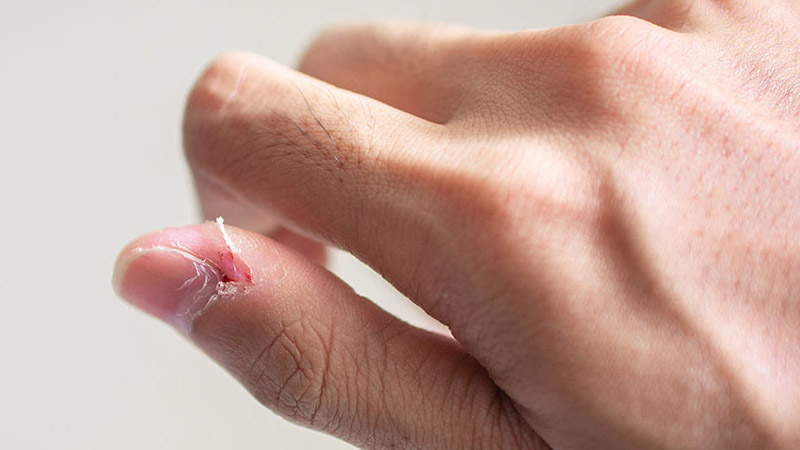Having the perfect manicure may be less satisfying if the skin around your nails is peeling. Not only does this detract from the aesthetics of even the most complex nail art, but it can also cause discomfort and irritation. More seriously, if the skin is manipulated or pinched, it can cause pain and further damage.
Peeling of the skin around the nails can be due to various causes. Some of them are under our control, such as overhand. washing or using strong disinfectants, which remove moisture from sensitive skin in this area. Similarly, frequent exposure to cleaning chemicals and other irritants can dry out the skin and cause peeling. Fortunately, making simple changes, such as reducing these exposures, can often alleviate the problem.
However, if lifestyle adjustments do not resolve the problem, it could be indicative of an underlying condition. Skin disorders such as eczema and psoriasis can cause significant peeling, not only around the nails but also on the hands. According to Dr. Nivedita Dadu, a dermatologist cited by the Hindustan Times, “Psoriasis is an autoimmune condition that can cause redness, peeling and cracking of the skin, even affecting the areas around the nails.” Other conditions such as chronic eczema, atopic dermatitis and pompholyx also contribute to skin deterioration in these areas.
Addressing peeling skin may not only be about cosmetic maintenance, but also preventing additional complications such as infections, which can occur if the peeling skin breaks down and is left untreated. Understanding the root cause of peeling is essential to preventing recurrence and ensuring effective treatment.
To control dry, peeling skin around your nails, cuticle cream or cuticle oil can be very effective. These products are often enriched with vitamins and other nutrients that nourish the nail bed and surrounding skin. A small amount of cuticle oil, usually applied with a brush, or a tablespoon of cuticle cream rubbed into the area can provide relief. Ideally, these treatments should be performed at times when your hands are not busy, such as before going to bed, to allow the product to be fully absorbed without rubbing off.
For more comprehensive care, hand creams containing emollients such as shea butter, lanolin, glycerin and humectants such as hyaluronic acid are recommended to soothe and repair the skin barrier. These ingredients help retain moisture and restore skin health.
While topical treatments can provide temporary relief, identifying and addressing the underlying cause is crucial. Whether through allergy testing, changing washing habits, or seeing a dermatologist for chronic conditions, addressing the root problem will help mitigate the recurrence of peeling skin. Often, solutions like switching to an alcohol-free sanitizer, using colder water to wash your hands, or choosing less harsh nail care products can make a significant difference.
Ultimately, while peeling skin around the nails is a common problem, it can usually be controlled with simple remedies and lifestyle adjustments. Regular application of appropriate skin care products and careful review of hand care routines can substantially reduce and prevent peeling, maintaining both the beauty and health of the hands.


